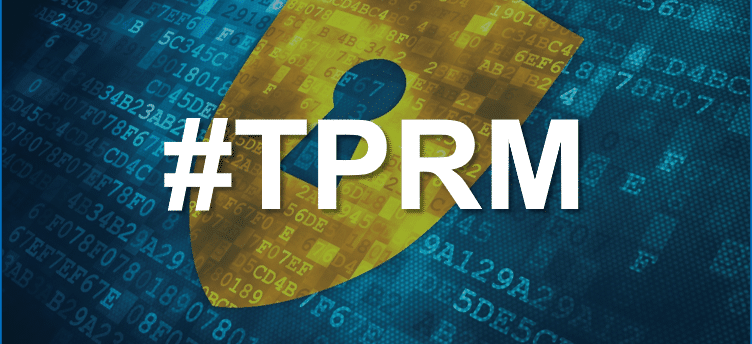Why Third-Party Risk Management (TPRM) is critical for an organization
Explaining why an organization should have robust TPRM framework.
Mayuresh Gadhekar
3/5/20252 min read


As organizations expand their digital ecosystems, third-party vendors, suppliers, and service providers become integral to operations. While these relationships enable efficiency and scalability, they also introduce significant cybersecurity risks. Third-Party Risk Management (TPRM) is a crucial component of a robust cybersecurity strategy, ensuring that external entities do not become the weakest link in an organization’s security posture.
Understanding TPRM in Cybersecurity
TPRM is the process of identifying, assessing, and mitigating security risks associated with third-party relationships. These risks include:
Data breaches due to vendor vulnerabilities
Non-compliance with regulatory requirements
Compromised supply chain security
Operational disruptions due to third-party failures
Reputational damage from vendor security incidents
As a Senior Risk Management Analyst, I have seen firsthand how inadequate third-party security measures have led to massive breaches and regulatory fines. Organizations must proactively implement TPRM frameworks to protect their data, infrastructure, and reputation.
The Growing Importance of TPRM
1. Rising Supply Chain Attacks
Cybercriminals increasingly target third-party vendors as entry points into larger networks. High-profile supply chain attacks (such as the SolarWinds and Kaseya breaches) highlight the importance of scrutinizing vendor security practices.
2. Regulatory Compliance and Legal Obligations
Organizations are held accountable for third-party security under regulations such as:
GDPR (General Data Protection Regulation)
ISO 27001 (Information Security Management System)
SOC 2 (Service Organization Control)
NIST 800-53 (Cybersecurity Framework)
PCI DSS (Payment Card Industry Data Security Standard)
SOX (Sarbanes-Oxley Act)
Failure to ensure vendor compliance can result in fines, legal actions, and loss of business trust.
3. Cloud and SaaS Dependencies
With organizations increasingly relying on cloud services (AWS, Azure, GCP) and SaaS applications, the attack surface expands. A weak security posture from cloud providers or SaaS vendors can expose sensitive data and disrupt business continuity.
4. Operational and Financial Risks
A third-party outage or security breach can lead to financial losses, operational downtime, and reputational harm. Companies must conduct risk assessments before onboarding vendors and continuously monitor their security posture.
Key Components of an Effective TPRM Program
To mitigate third-party risks effectively, organizations should adopt a structured approach to TPRM:
1. Vendor Risk Assessment
Before engaging with a vendor, organizations must conduct due diligence, including:
Reviewing SOC 2 Type II reports
Validating ISO 27001 certification
Conducting penetration testing assessments
Assessing compliance with regulatory frameworks
2. Contractual Security Requirements
Contracts should include clauses for:
Data protection and privacy (GDPR, CCPA compliance)
Incident response and breach notification timelines
Audit rights and security testing requirements
Encryption and data handling policies
3. Continuous Monitoring
Security is not a one-time assessment. Organizations should:
Perform regular security audits
Implement continuous threat intelligence monitoring
Use Vendor Risk Management (VRM) platforms for automation
4. Incident Response and Contingency Planning
A well-defined third-party incident response plan ensures quick action in case of a breach. This includes:
Vendor breach notification protocols
Escalation paths and remediation plans
Legal and regulatory reporting obligations
The Future of TPRM in Cybersecurity
With evolving cyber threats, organizations must shift from reactive to proactive third-party risk management. The future of TPRM will see:
AI-driven risk assessments for faster vendor evaluations
Blockchain-based supply chain security for improved transparency
Zero Trust Architecture (ZTA) to minimize third-party access risks
Conclusion
Third-Party Risk Management (TPRM) is no longer optional—it is a cybersecurity necessity. A single third-party vulnerability can expose an organization to data breaches, regulatory penalties, and financial losses. Organizations must prioritize rigorous vendor assessments, continuous monitoring, and contractual security requirements to mitigate third-party risks effectively.
As cybersecurity professionals, we must champion strong TPRM programs and ensure that vendors align with the highest security standards. By doing so, we can build a resilient and secure digital ecosystem that protects businesses, customers, and sensitive data from cyber threats.
About the Author As a Senior risk management analyst professional, I specialize in risk management, compliance, and security audits. My expertise spans ISO 27001, SOC 2, GDPR, and cybersecurity frameworks, helping organizations secure their third-party relationships and protect critical assets.